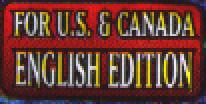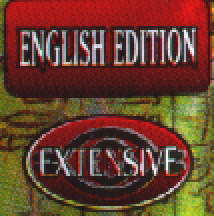In my very first rant here on the Yu-Gi-Oh! Corner, I discussed how I felt players of the game were overly concerned with the rarity of their cards. I still feel that way to a certain degree, and since the release of the structure decks, an even larger percentage of my deck is non-holo yet still highly functional.
Regardless, if one is going to gamble their money by buying booster packs, which is a fun thing to do now and then even if you do have a better way of getting ahold of the cards you want, one should come prepared with ways to turn the odds in their own favor, if such things exist. Now, the most proven method for pulling holos in Yu-Gi-Oh! is pack scaling. By weighing an entire box of boosters and choosing the heaviest, it is quite reasonable to obtain all the holos from that box, and ONLY the holos from the box. However, this requires a scale (the more accurate, the more expensive). In addition, many locales will not allow their packs to be scaled, and blister packs, which place a single booster into a cardboard box, are notoriously difficult to scale. So, is there another trick which can be applied more quickly and less expensively, even in scale-unfriendly locations?
The answer is "absolutely," and while it is well-known, it is typically looked down upon, mostly by scale users. However, using this technique alone, I was able to significantly increase my own holo pull rate, and so I became an instant believer. This trick is what I like to call the "Print Trick" holo glitch. The trick? Simply select the pack(s) with the most printing errors on their wrappers. Sounds too easy, doesn't it?
To understand how this trick works, you must understand a few things about Upper Deck's card printing process which have become known over the last couple of years. The same machines that print cards also print the wrappers into which they will be sealed. Holo cards, because they require extra processing to apply a foil layer within the card, are printed on separate machines. Because holo cards use a significantly greater amount of ink to print, these holo card machines tend to run out of ink faster and cause more printing errors on the pack wrappers. Using this knowledge, it stands to reason that the worse a pack looks on the outside, the better its contents are likely to be. What follows are the tell-tale details from four packs which I have opened during this year, selected using nothing other the Print Trick.
Pack #1: Dark Beginning 1 blister pack booster
Notable Contents: 1 Ultra Rare "Exodia the Forbidden One"
Pictures:


Pack #2: Legacy of Darkness blister pack booster
Notable Contents: 1 Super Rare "De-Fusion"
Pictures:


Pack #3: Soul of the Duelist blister pack booster
Notable Contents: 1 Ultra Rare "Inferno Fire Blast", 1 duplicated common
Pictures:


Pack #4: Dark Revelation Vol. 1 blister pack booster
Notable Contents: 1 Super Rare "Necrovalley"
Pictures

The first thing to look at on ANY pack when trying the Print Trick is the upper right hand corner of the pack, where you will find the edition indicator icon. Because of the especially small width of the lettering, the ink here often bleeds across the letters. The more erroneous this text appears, the greater the chance of a holo pull appears to be. This is by no means 100% reliable, however. I have bought a few packs with severe disfigurement in this area which turned out to be duds. Note that on reprint packs which contain a "play level" icon below this, such as "EXTENSIVE" or "ESSENTIAL", print errors on that icon strengthen the case for a holo even further. This can be seen on the Dark Revelation Vol. 1 pack.
The second thing to examine is the Konami banner, across from the edition icon. On the Legacy of Darkness pack, you can make out yellow ink bleeding across both the edition icon AND the Konami banner text. If you know how color printing works, you know that the fundamental colors used to print are cyan, magenta, and yellow. This means that the yellow ink spiget on the machine that printed this card was out of alignment, low on ink, or needed to be cleaned.
The third thing to take a look at is Yugi's face. Lots of detail in this area equals easily spotted printing anomalies. The red "pimple" dots on Yugi's face on the Dark Beginning 1 pack scream out that this pack is a holo. You can see them bleeding from the sides of his eyes and across two of his hair spikes on his right side. On the Soul of the Duelist pack, the red part of his eyes bleed slightly across the black lines toward his left.
Another tip which I've heard, but is more difficult to apply, is to look for packs which appear significantly darker, lighter, or more dull than any others, as these indicate fairly obvious problems with the printing. I have not personally had success with this, however, since it is very difficult to judge differences in color between dozens of packs. It is worth noting, however, that the Yu-Gi-Oh! logo on the Dark Revelation 1 pack is very dull. I didn't notice this until after I scanned the pack wrapper, but I find it interesting in retrospect.
In short, this is a quick, easy, and perhaps less controversial method to improve your holo pull rate from booster packs. Don't try it and get mad if it fails, because it will sometimes, but doing it, and doing it consistently, will definitely improve your odds. Even if you miss, it is better to have missed on something that was a good bet than on something that didn't look special at all. Until next time, have fun!
